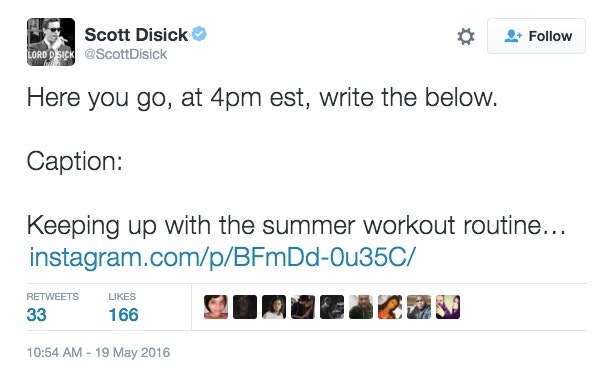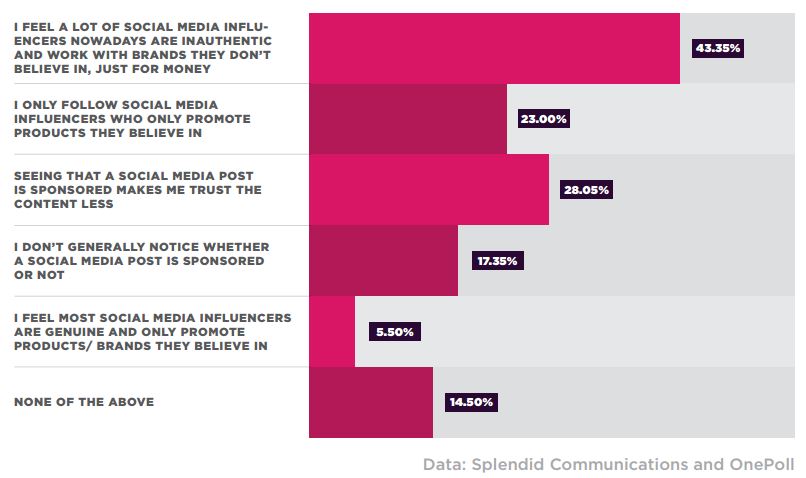A happy creator is an amiable creator. If your company is great to work with, the co-ideation, production, and outcome of your campaigns will be better. But there are many things that campaign managers do that creators loathe -- sometimes consciously and sometimes without realizing it.
1. Don’t Call Them Influencers
The easiest way to keep creators happy is to call them by their profession – videographers, photographers, artists, content creators – or at the very least, "creators." Show respect and industry understanding through your language. Remember: influencer marketing is the industry, creators are the people.
2. Share Control Over Content
Creators are hesitant to relinquish creative control over the content they produce. Like the brands with which they advertise, creators have their own standards of creative direction, brand safety, and effective tone. When a sponsoring partner strongarms a creator and undermines the brand that they have built, it can create dissonance before a campaign has even reached production.
If a creator produces a piece of content that is then disapproved, the argument of ‘didn’t meet specifications’ versus ‘unclear brief’ will often arise. Final approval is often a power struggle between the creator, their manager, and the campaign manager acting on behalf of the agency or sponsoring brand.
Brands hire creators because they like their existing content and the sponsored work they create. Don’t forget authenticity – the strongest performance factor of campaigns – when curating branded content.
One of the most infamous influencer marketing blunders came when Scott Disick (@letthelordbewithyou) promoted the following copy image and caption -- with the sponsoring brand's (Bootea) instructions un-redacted -- to his millions of followers:

This situation could have been avoided had Bootea passed the onus of creativity to Scott Disick, rather than copywriting a caption word-by-word for him.
Creators generally loathe repurposing images that are provided by the brand. Things like infographics, screenshots, and website images are generally a no-go. Textual or kitschy graphical imagery can interrupt a creator’s feed’s flow, usually perform worse, and are often hastily deleted after the terms of the contract are expired.
Agencies have a tendency to deliver content “literally” – an absolute version of the vision communicated by their client’s brand. Brands that are proactive in the creative process with their agency partners, and/or that work directly with creators, tend to produce stronger-performing and more authentic content.
If you are an agency campaign manager, make sure you don’t stifle a creator’s authentic tone out of fear of missing the mark with the partner brand.
PR firm Splendid Communications put out a study polling thousands of social media-using adults around the topic of influencer authenticity:

When working with a creator whose content includes location as a focal creative element, sponsoring brands or agencies should be cognizant of conflicting publishing calendars.
For example, if campaign requirements necessitate that posts created in Los Angeles to be posted over a month’s time, and that creator plans to travel to three different locations within that same timeframe, they may push back as the Los Angeles posts break their feed’s creative continuity.
Lastly, make links beautiful. Instead of bit.ly or goo.gl, consider clever custom domain hacks or URL redirects that contain a legitimate-looking structure and TLD. Otherwise, creators may be reluctant to include them. This is especially true on social post types that do not support hyperlinks, like a native Instagram post -- shortlinks or ugly query parameters can look particularly spammy.
3. Don't Commit Revision Abuse
Creators don’t like multiple submissions of content. If a brand isn’t completely happy and they want another version (outside of the scope of the agreement), they should be prepared for an annoyed response or half-hearted effort by the creator and their manager.
This is especially true of videos – verbal edits (“change this word”), visual edits (“change this scene”), and editorial edits (“change this lighting”) all require an understated collective effort to revise when producing video content.
Videos should generally be priced higher than photo work to reflect an increased production workload. A creator usually has a small team that he or she activates to deliver video content.
Often, the opportunity cost of redoing creative can eclipse the payout of the campaign. Consider specifying revision clauses in the contract upfront to preemptively mitigate disagreements and to avoid creators feeling underpaid or cheated.
4. Quit the Crummy Contract Clauses
Creators hate long exclusivity and non-compete clauses. Good talent managers will try to negotiate downward (or at higher rates).
Once the terms of an exclusivity clause are expired, creators are likely to archive or simply delete binding posts on Instagram, which can result in lost EMV. It’s also worth noting that an active creator’s posts are effectively “archived” naturally after roughly seven days (once a post has progressed through its natural half-life).
There is not really a competitive benefit to exclusivity. In fact, it usually only upsets creators while providing marginal contractual benefits. Further, there is already implicit exclusivity in campaigns; what brand wants to approach creators using a competing brand?
“Rev-sharing,” a payout model that shares revenue generated for a brand rather than a set-in-stone commission, is almost always seen as a worse deal for creators. The exception to this payment model is “reviewer” creators, or those whose audiences are expecting product recommendations as content.
For a rev-share to make sense for most creators, the product being promoted should have an element of urgency, exclusivity, or depletion, like limited edition series or limited tickets to a live show.
Disorganized terms around activations that require a creator to be physically present are frustrating to creators. Too often, a contract will require a creator to be present “on-set” for an entire day, even when the actual “working” time only constitutes 2 – 4 hours. Save money and rapport by building in padding to shoots, interviews, and events, and ask your creator to be there only when they’re needed.
Think ahead and position creators wisely so that they happen upon the best organic onsite content opportunities. Dedicated personnel to escort the creator and other celebrity-like accoutrements can go a long way in making a creator feel special.
Lastly, make sure the WIFI is strong!
